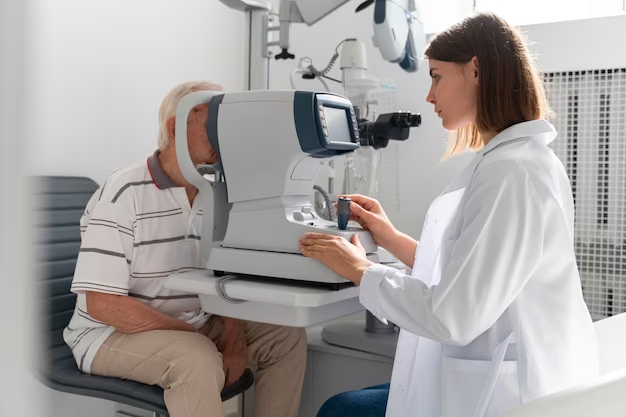
Diabetic retinopathy screening is a critical aspect of diabetic care, as diabetes can lead to damage of the blood vessels in the retina, potentially causing vision loss or blindness if left untreated. Here's an overview of diabetic retinopathy screening:
- Regular Eye Exams: People with diabetes should undergo regular eye exams, typically annually or as recommended by their healthcare provider. These exams are crucial for early detection and treatment of diabetic retinopathy.
- Dilated Fundus Examination: During a dilated fundus examination, your eye care professional will use eye drops to dilate your pupils, allowing them to examine the retina and optic nerve at the back of the eye. This examination can reveal signs of diabetic retinopathy, such as microaneurysms, hemorrhages, exudates, and new blood vessel growth.
- Fluorescein Angiography: In some cases, fluorescein angiography may be performed to assess the blood flow in the retina. This test involves injecting a special dye into a vein in your arm and taking photographs of the retina as the dye circulates through the blood vessels. It helps identify areas of leakage or abnormal blood vessel growth.
- Optical Coherence Tomography (OCT): OCT is a non-invasive imaging test that provides high-resolution cross-sectional images of the retina. It helps assess the thickness of the retinal layers and detect fluid accumulation or swelling, which are signs of diabetic macular edema, a complication of diabetic retinopathy that can cause vision loss.
- Risk Assessment: In addition to these tests, your eye care professional will consider other risk factors for diabetic retinopathy, such as the duration of diabetes, blood sugar control (hemoglobin A1c levels), blood pressure, and cholesterol levels.
- Telemedicine Screening: In recent years, telemedicine screening programs have been developed to increase access to diabetic retinopathy screening, particularly in underserved or rural areas. These programs use digital retinal imaging to capture images of the retina, which are then evaluated remotely by trained professionals.
- Education and Follow-up: Along with screening, education about diabetes management and regular follow-up care are essential for preventing and managing diabetic retinopathy. This includes maintaining good blood sugar control, managing other medical conditions like hypertension and hyperlipidemia, and following a healthy lifestyle.
Early detection and timely treatment of diabetic retinopathy are crucial for preserving vision and preventing vision loss. If you have diabetes, it's essential to prioritize regular eye exams and follow your healthcare provider's recommendations for diabetic retinopathy screening and management.
Copyright @ NARAIN EYE CARE